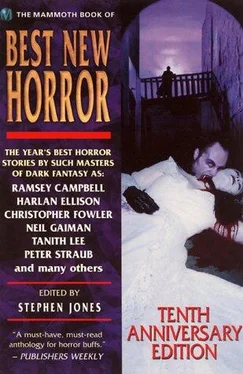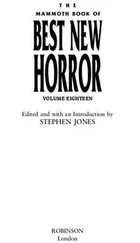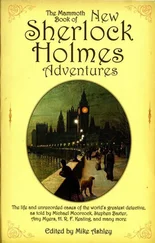Bagnell found himself breathing rapidly again. “Look here, Luke” — a silvery-tufted eyebrow shot up, but Larraby listened, — “this is absolutely the first time it’s been even possible to think of its being even possible to provide any element of prehistory of a Paper-Man, and you can’t let it go by and risk losing it forever.”
Larraby, still calm in his naturally-cool old-fashioned office, with sepia-tinted framed photographs of his predecessors on its walls; Larraby, still calm, said it was Bagnell’s fault for showing enthusiasm. “However. I understand your emotion. Still, why he wants $200, $200 for a daguerreotype of a nobody, for that price you ought to get one of Lola Montez naked — and I have not got that $200 in my budget.”
Bagnell gnawed his neat mustache. “Well, how much have you got that you can spend to borrow the picture, just borrow it and have it copied? I mean, you absorb the copying costs, and I’m sure I can manage a pro rata share of it — how much?”
The old curator sighed and canted his head and looked at his wall calendar. “Oh. $50? Tops.”
* * *
Mr Sydney was cautious. Mr Sydney smelled something. Bagnell offered to have it cleaned for him. “No charge.”
“Cleaned ? It’s as clean as a whistle! Look at it. Beautiful condition. What — ”
“Okay. I’ll come clean with you.”
“Now we’re talking.”
“The Carolina Coast Museum — ”
“The Carolina Coast Mu — Oh, Lord, they don’t have a button! Nothing doing. Oh, well, what’s your offer?”
“An offer of $50 just to — ”
Mr Sydney’s shock was not assumed. “Fifty dollars! No no. Out of the — ”
“- just to borrow it for one week for purposes of comparison with another picture.”
This was unexpected. Mr Sydney seemed genuinely uncertain. “And what do I do if someone comes in off the Row and asks, ‘where’s the old snapshot of the boy in uniform, used to be in between Baby Phoebe and Grampa Jukes?’ “
“You say ‘It’s being cleaned. Would you like to put down a deposit? It will be cleaned for you. Free.’ “
It was immediately clear that Mr Sydney liked this image. He nodded. His mouth moved, evidently silently repeating the words. “You have a suggestion there. Not bad. Very well. I feel able to do it for you and the museum, but for $75. Impossible for less: risk factor.”
Slowly, Bagnell emptied his pockets. There was the fairly crisp $50. And, also, there was a limp $20, and two dim ones, and 50 cents. His sigh was quite immediate. So was Mr Sydney’s reaction. “Oh, very well, the Firm will settle for $70, and will cover State tax. The Firm is not hard-hearted. Keep the two-fifty for lunch. The Museum will probably offer you possum a la taxidermy. Oh, and I shall require you to show some ID and to sign a little piece of paper, and then shall I gift-wrap it for you? No? But remember now: Not more than one week.”
* * *
“Company in the parlor,” Curator Larraby said, briskly.
Bagnell blinked. “An odd phrase to come from a self-admitted church member.”
Company, in the small lecture-room (doors locked), consisted of Hughes of the Southeastern Interstate Criminology Institute (commonly called the Crim Lab), and Dr Preston Budworth of every hospital in town. “My colleagues insist that the best specialty is dermatology. They say, ‘The patients never die and they never get cured; they just keep coming back.’ And I say, ‘True, but plastic surgeons make more. Oh boy, yes. Of course, we work hard for it, oh, it’s hell on the feet.’ “
He said no more for the moment, the lights having then been turned off; then he said, “Jesus Christ!” — the slide of the Paper-Man’s head having briefly flashed on the screen. “Course, I’ve seen worse,” said Dr Budworth. “Oh, lots worse. But seen nothing the same. What in salvation is it?” The copy of the ambrotype next appeared. “Soldier boy, hey?” It remained a while, then the severed head, with its cold, sly sneer, came back to grimace at them. Dr Budworth cleared his throat and said, “Looks as though he’d been shot dead at Gettysburg and had his picture taken at Appomattox.”
In a voice slow and heavy, Larraby said, “Perhaps you’re right.”
There was a silence then, broken by Hughes asking, “Is this your question, Curator? ‘Are these two pictures of the same man?’ Is that it?” Larraby said, yes, that was it. Was asked to show both slides side by side. Did so. Hughes then said he thought they might well be. “For example, that drooping — Oh, excuse me, Dr Budworth.” But Budworth told him to go on. “- that drooping eyelid. And then you observe the crease in the ear lobe. Can you see that really very slight scar on the cheekbone, on the opposite side from the drooping eyelid? And, ah, of course in the, I assume, post-mortem photo, some of the teeth are exposed, and you see that the left canine is crooked and protrudes. Of course in the one in uniform, he has his mouth closed, but there is still a slight protrusion just over where that canine would be.
“Now, these are technical observations, though not very technical, and of course my simple guess would have been anyway that it is the same person, some years apart, though I wouldn’t offhand guess how many. Not more than ten, I’d say. Maybe even five, or a bit less, since. war being war, you know. ”
The “post-mortem” photo, a perfectly correct description, certainly, had been cropped in the copying process, and it was not evident that the head was separate from the torso. If Hughes suspected anything, Hughes was not saying. To Bagnell, trying to put aside what he knew, merely the difference in the photographic techniques, more than a century apart, was obvious.
Preston Budworth’s comments were more technical, but he came to the same conclusion. “Of course I would want to make measurements and enlarge the pictures even more, on as close to even-scale as possible, before I’d sign my name to anything, not that I’m going to, anyway. Historical detective work is lots of fun, of course, and nobody waiting to sue you for malpractice. Well. I wouldn’t want to ask where you got that ghouly-looking one from.”
Promptly, Hughes said, “I would. I will. Where?”
But they did not tell him. Not yet.
* * *
Military historians identified uniform coat and badges as those of the 23rd Patriot Rifles. Phone calls in all directions finally produced Charles O’Neill Sturtevant, Col., USA (Ret.), who had an enormous collection of Civil War photographs. And -
“Mind you, young man, it’s a loan. Your balls are in bond for it.”
“Yes, Colonel, of course, any time you like, sir,” babbled Bagnell, scarcely knowing what he was saying.
On that red-letter day, against what awesome odds, Ed Bagnell found what he was hoping for: printed off a cracked wet-plate, though only slightly cracked, the likenesses of three young men, frozen stolid, hands on knees; and on the back the signatures — two florid and scrawly/scrolly, one awkward and crammed — Corporal W. M. Ewing. Private Elwen Michaels. Private Ephraim Mackilwhit.
Now for the first time, there was a name.
* * *
The 23rd Patriot Rifles had been enlisted in Gainsboro, as far to the South as it was perhaps possible for a Northern town to be, and there Bagnell went as fast as was consistent with speed laws, and energy consistent with small packets of crackers-and-cheese sold in gas stations. In the Gainsboro phone book he pushed a restless finger down the columns in search of people named Mackilwhit.
Читать дальше











